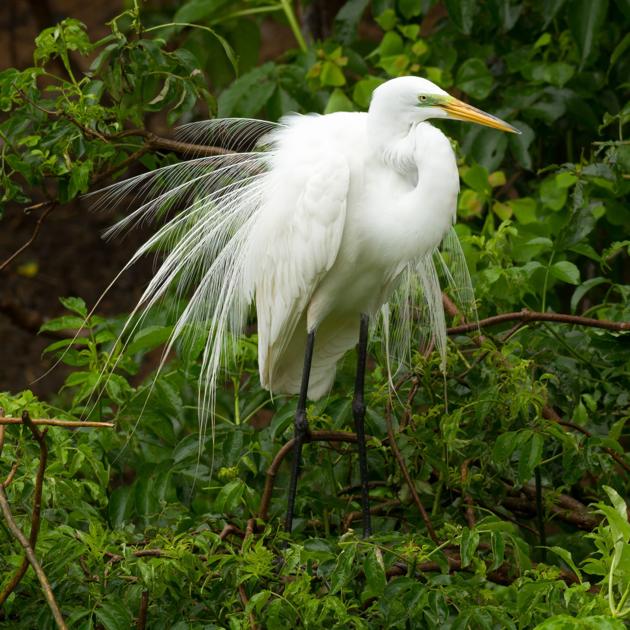
Birds have declined, decreased greatly in number, since I was a boy.
Experts estimate they’ve decreased by 60%. There just aren’t as many birds as there used to be.
When I think about it, I can see it. House sparrows used to crowd the bird feeders around my home. Black-capped chickadees, white-breasted nuthatches, tufted titmice and downy woodpeckers were numerous in summer and winter.
Now I see no more than five or six house sparrows together and seldom more than two chickadees, nuthatches or titmice. Mourning doves seem as numerous as ever, however, and cardinals are more numerous, in northern Indiana anyway, than they used to be.
I found one robin’s nest in our yard last summer. I used to find three or four robins’ nests in our yard every summer.
I used to see song sparrows and bluebirds, brown thrashers and catbirds every summer, in the yard and in the bushes and trees around the pasture. This summer there were song sparrows, though only two, a pair, and I only saw a catbird, once.
Chimney swifts used to be one of the most numerous birds of summer. This year I have seen just one chimney swift. Meadowlarks used to be common along country roads in summer and at least two pairs nested in our pasture. This past summer there were no meadowlarks in our pasture and they were uncommon along country roads.
Nighthawks weren’t numerous when I was young, but they were common. They are active at dusk and the males are particularly active when trying to impress a mate. They fly in a zigzag pattern higher and higher, then dive back nearly to the ground, their wings making a loud buzzing sound as they pull out. As a boy I used to enjoy watching, getting under one as it rose, being under it when it pulled out of its dive.
Cuckoos, black-billed and yellow-billed, like nighthawks, weren’t numerous when I was young, but they were common enough that I saw one regularly and found a nest occasionally.
Great egrets were numerous when I was a boy. Egrets are herons and great and snowy egrets are white. They are, or were, southern birds. I never saw either when I was young, nor did I ever expect to see one.
During their mating season they grow long, lace-like feathers. They were slaughtered for these feathers which were used to decorate ladies hats. So great was the slaughter before a bird protection law was passed that in “Birds of America” it states “it is doubtful whether the species can be saved.”
A bird protection law was passed, the great egret, and the snow, were saved, and now the great egret has increased and been extending its range. Recently my older son told me he saw two great egrets on the shore of a lake just two miles from my home.
A few days later a friend notified me by email he had seen a flock of great egrets, 20-30 of them he wrote, in a field near a lake just a few miles from my home. Since then I’ve received another email reporting a great egret on the shore of a lake in the Indiana county north of the one where I live, one of the most northern counties in Indiana.
There are other species also that have increased.
Bald eagle, another bird I never saw as a boy, have increased, helped by eaglets taken from nests and raised in artificial nests. Peregrine falcon, another bird that nearly become extinct, has increased and a pair have nested for several years in Fort Wayne.
The turkey vulture has increased until it is common to see flocks circling high in the sky or gatherings at road kills. The osprey and wild turkey have increased. Canada geese have become common.
Bird watching ain’t what it used to be.
"bird" - Google News
October 21, 2020 at 11:00AM
https://ift.tt/3jgLgcN
Bird watching and numbers have changed | Albion New Era - KPCnews.com
"bird" - Google News
https://ift.tt/2s1zYEq
https://ift.tt/3dbExxU
Bagikan Berita Ini














0 Response to "Bird watching and numbers have changed | Albion New Era - KPCnews.com"
Post a Comment